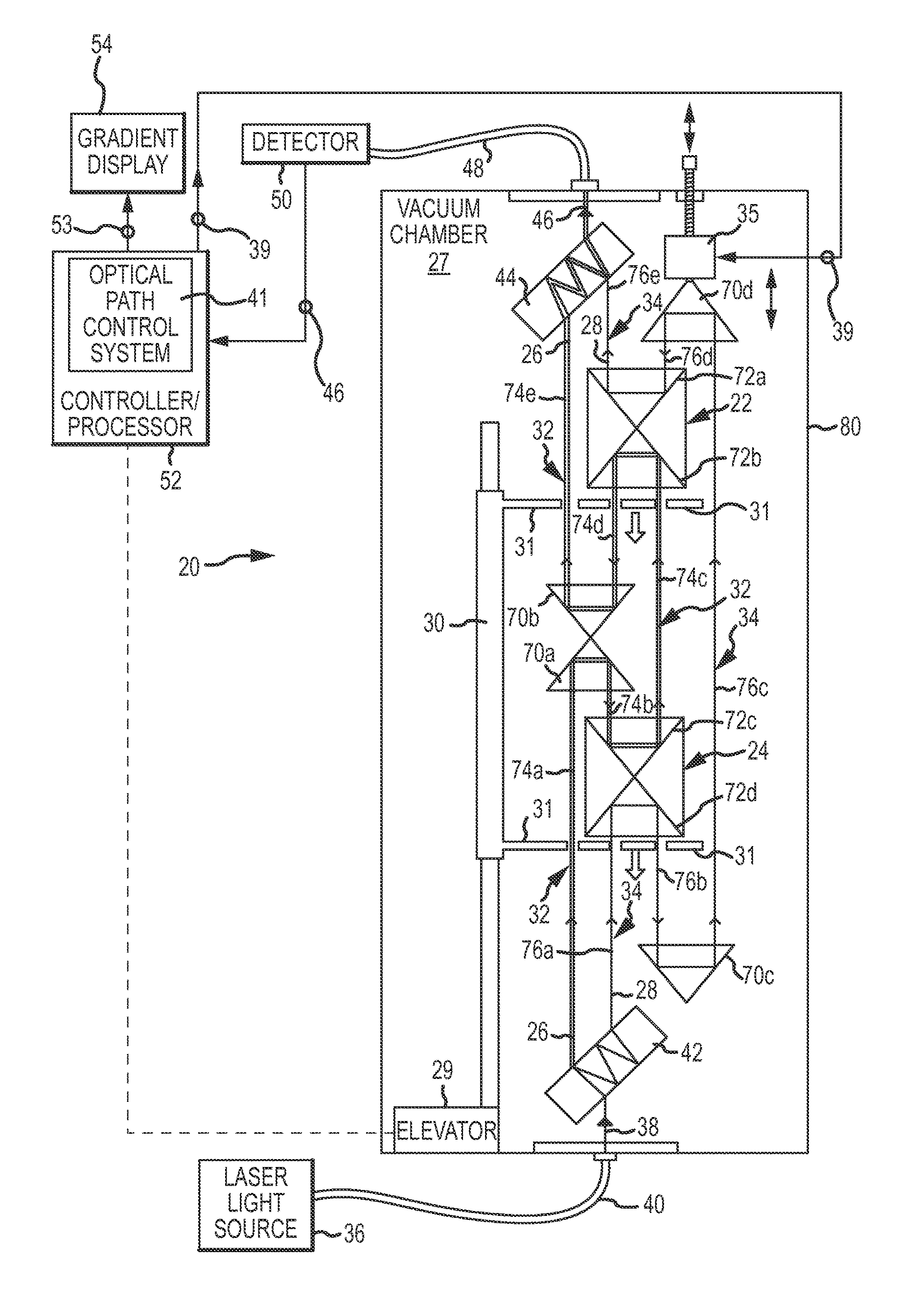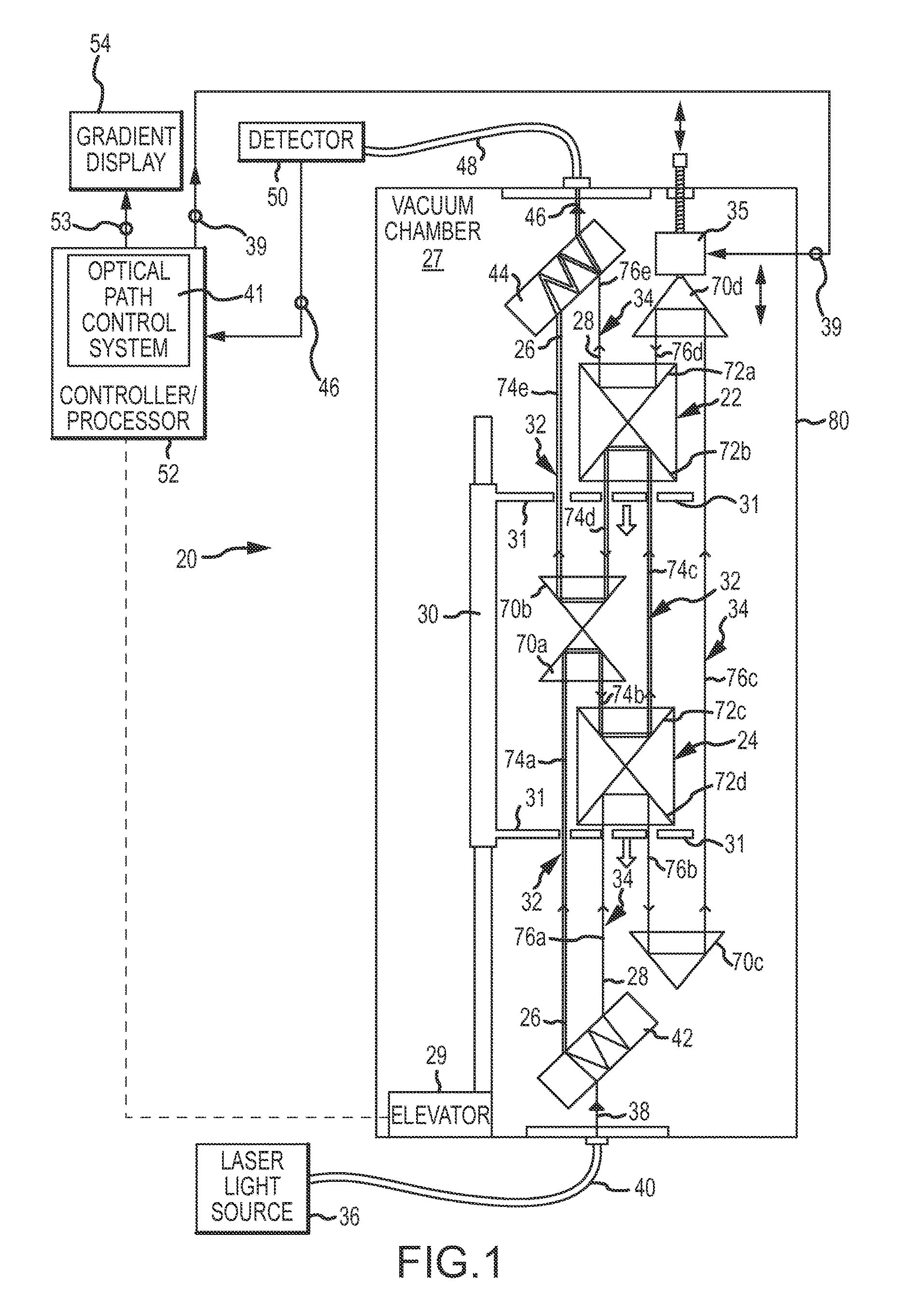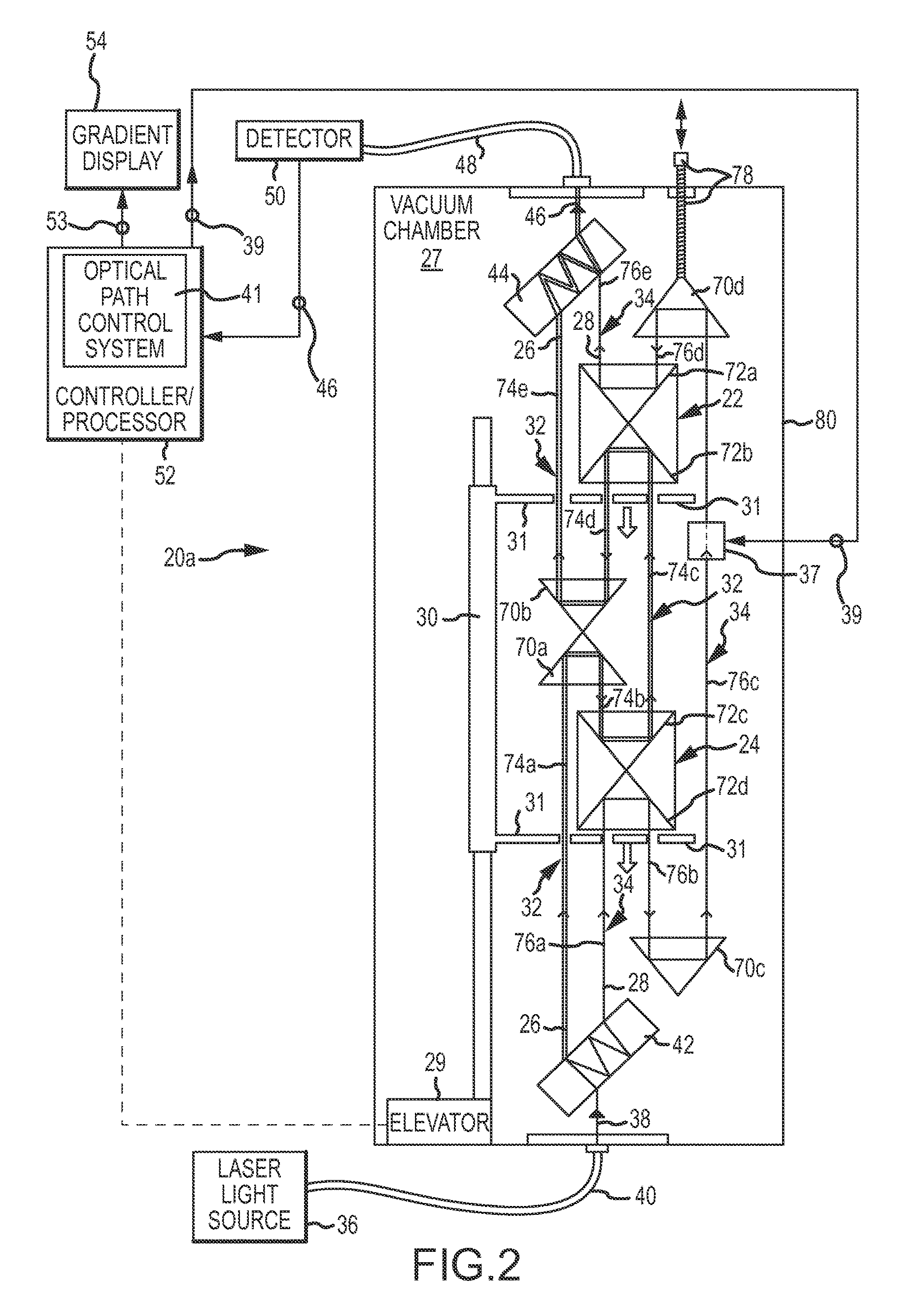Gradiometer and method of changing an optical path length to directly obtain a value of a gradient of gravity
a gradient and optical path technology, applied in the field of measuring a characteristic of gravity, can solve the problems of difficult gravimeters with such high precision, relatively complex mathematical interferometric analysis, and inconvenient operation, so as to reduce the freefall distance, avoid the need and complexity, and accurate and direct gradient measurement
- Summary
- Abstract
- Description
- Claims
- Application Information
AI Technical Summary
Benefits of technology
Problems solved by technology
Method used
Image
Examples
Embodiment Construction
[0026]The present invention is embodied in each of two optical interferometric gradiometers 20 and 20a, shown in FIGS. 1 and 2. The optical gradiometers 20 and 20a are used to measure a gradient of gravity. The gradient of gravity is represented by the relative difference in gravity experienced by two test masses 22 and 24 when they are released to freefall simultaneously only under the influence of gravity. The force of gravity acting on the lower test mass 24 is very slightly greater than the force of gravity acting on the upper test mass 22, since the lower test mass 24 is closer to the center of the earth's mass and therefore experiences a slightly greater gravitational force. A slight difference between the forces of gravity acting on the test masses 22 and 24 constitutes a gradient of gravity which is measured in accordance with the present invention.
[0027]The slightly greater gravity on the lower test mass 24 causes it to experience a slightly greater downward acceleration co...
PUM
 Login to View More
Login to View More Abstract
Description
Claims
Application Information
 Login to View More
Login to View More - R&D
- Intellectual Property
- Life Sciences
- Materials
- Tech Scout
- Unparalleled Data Quality
- Higher Quality Content
- 60% Fewer Hallucinations
Browse by: Latest US Patents, China's latest patents, Technical Efficacy Thesaurus, Application Domain, Technology Topic, Popular Technical Reports.
© 2025 PatSnap. All rights reserved.Legal|Privacy policy|Modern Slavery Act Transparency Statement|Sitemap|About US| Contact US: help@patsnap.com



